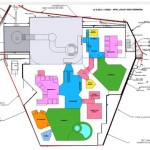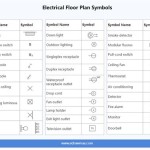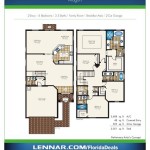Essential Aspects of House Floor Plans
Deciding on the layout and design of your dream home is an exciting and essential step in the building process. House floor plans serve as blueprints that guide the construction and layout of your future home, ensuring that it meets your specific needs and preferences.
Functional Zoning
A well-designed floor plan divides the house into functional zones, such as public spaces (living room, dining room, kitchen), private spaces (bedrooms, bathrooms), and service areas (laundry room, storage). This zoning optimizes space utilization and ensures a smooth flow of traffic throughout the home.
Natural Light and Ventilation
Windows and doors are crucial elements in a floor plan as they provide natural light and ventilation. Proper placement of windows allows for ample sunlight in all rooms, reducing energy consumption and creating a comfortable living environment. Cross-ventilation promotes air circulation, preventing stuffiness and ensuring a healthy indoor climate.
Circulation and Accessibility
The floor plan should ensure easy movement and accessibility throughout the house. Wide hallways, clear pathways, and well-positioned stairs are essential for comfortable living, especially for individuals with mobility impairments. Clear sightlines between spaces create a sense of spaciousness and connectivity.
Privacy and Comfort
Bedrooms and bathrooms should be placed in private areas of the house to ensure privacy and tranquility. Master suites typically feature en-suite bathrooms and walk-in closets for added convenience and luxury. Open-plan spaces, while offering a sense of openness, should be balanced with private nooks and quiet corners for relaxation.
Outdoor Living Spaces
Incorporating outdoor living spaces into the floor plan enhances the functionality and enjoyment of your home. Patios, balconies, or decks extend the living area outdoors, providing a seamless transition between indoor and outdoor spaces. These spaces can be used for dining, entertaining, or simply relaxing in nature.
Site Conditions and Orientation
The floor plan should be designed in consideration of the site conditions and orientation. Factors such as the slope of the land, prevailing winds, and solar exposure should influence the placement of windows, doors, and outdoor spaces. Optimizing the orientation of the house can maximize natural light, reduce energy costs, and enhance the connection with the surroundings.
Professional Considerations
Creating a comprehensive floor plan requires knowledge of building codes, zoning regulations, and construction practices. It is highly recommended to consult with an experienced architect, designer, or contractor who can ensure that the floor plan meets all necessary requirements and standards.

12 Examples Of Floor Plans With Dimensions

Floor Plans Types Symbols Examples

Ready To Use Sample Floor Plan Drawings Templates Easy Blue Print Floorplan Ezblueprint Com

Free Floorplan Template Inspirational Home Plans Sample House Floor Simple Plan Layout

Sample Floor Plan Image With The Specification Of Diffe Room Sizes Scientific Diagram

12 Examples Of Floor Plans With Dimensions

House Floor Plan Template

12 Examples Of Floor Plans With Dimensions

Sample Floorplan Floor Plan Template

Small House Floor Plan With Dimensions Template








